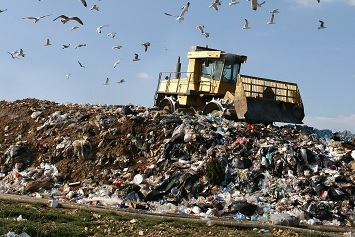The EPA recently issued an advanced notice of proposed rulemaking ((ANPR), December 26, 2018, Federal Register (FR)) discussing potential changes to regulations governing the management of liquids in municipal solid waste landfills (MSWLFs).

MSWLFs are subject to Resource Conservation and Recovery Act (RCRA) Subtitle D and EPA regulations at 40 CFR Part 258. Section 258.28 prohibits the addition of bulk liquids (noncontainerized liquids) into MSWLFs. The prohibition addresses the concern that leachate may escape the MSWLF and contaminate groundwater. There are exceptions to this prohibition, applicable, for example, to household bulk liquid waste. The EPA’s ANPR is based in part on research and development projects that states with RCRA authority have approved. Some of these projects described in the ANPR have shown the advantages of adding liquids to MSWLFs. Mainly, liquids accelerate the biodegradation of landfill waste and also accelerate formation of landfill gas (LFG) that can be collected and used to generate energy.
Based on this experience, the EPA is considering and seeking information on:
- Removing the prohibition on the addition of bulk liquids to MSWLFs;
- Defining a particular class of MSWLF units (e., bioreactor landfill units) to operate with increased moisture content; and
- Establishing revised MSWLF criteria to address additional technical considerations associated with liquids management, including waste stability and subsurface reactions.
The ANPR is a preliminary step in what may or may not develop into a formal proposal, and no new regulatory language is proposed. Stakeholders who wish to comment on the ANPR should do so with an understanding of the current requirements regarding bulk liquids in MSWLFs, which we summarize below.
1991 Regulations
The EPA promulgated minimum national standards in 1991 for owners and operators of MSWLFs. One objective of the program was to keep the contents of MSWLFs as dry as possible. Based on data available at that time, the Agency believed that minimizing the amount of liquid in a landfill reduced the possibility of groundwater contamination resulting from the leakage of leachate; reduced possible damage to the liner and final cover of the unit resulting from waste subsidence; and reduced buildup of hydrostatic pressure on the liner due to the bathtub effect (i.e., when the combined rate of liquids addition and infiltration outpaced the leachate removal rate).
To address these risks, the regulations prohibit disposal of bulk liquids in MSWLFs and require low permeability final covers. The design criteria in Section 258.40 indicate that unless an alternative is approved, new units and lateral expansions must be operated with a composite liner and leachate collection system designed and constructed to maintain a maximum allowable hydraulic head on the liner of 30 centimeters (cm). The resulting design has come to be referred to as a dry-tomb landfill.
2004 RD&D Rule
In 2004, the EPA promulgated its Research, Development, and Demonstration (RD&D) rule at 40 CFR 258.4 to expand research into liquids addition and other innovative landfill practices. The RD&D rule enables the director of an approved state waste management program to issue time-limited RD&D permits for the use of innovative methods that can vary the liquids restrictions at 40 CFR 258.28(a) and the run-on/runoff control systems in 40 CFR 258.26(a)(1), provided the MSWLF unit has a leachate collection system designed and constructed to maintain less than 30 cm of leachate on the liner. Time-limited variances for liquids addition are currently allowed at facilities with RD&D permits authorized under 40 CFR 258.4.
All RD&D permits are required to include terms and conditions as protective as the MSWLF criteria in Part 258 to ensure protection of human health and the environment. After the initial permit term of 3 years, the owner/operator may apply to the director of an approved state program to renew the RD&D permit for an additional 3-year term. The initial RD&D rule allowed three renewals for a maximum permit term of 12 years. In 2016, the EPA amended the RD&D rule to extend the maximum permit term to 21 years.
Areas of Risk
Understanding the behavior of liquids underground and particularly where an MSWLF is present is a highly technical endeavor. The EPA is looking to improve its understanding of three general risks that may be associated with the authorization of bioreactor landfills:
- The potential for release of contaminants to the groundwater due to increased moisture content and the potential for increased hydrostatic pressure on the liner;
- The potential for release of contaminants to the air resulting from accelerated biodegradation and LFG generation; and
- The potential for liquids management practices within the current regulatory framework to magnify any potentially adverse impact of bioreactor landfill operations, including releases to the environment due to the presence of additional liquids, resultant subsurface heating events, or waste stability issues.
The Agency will be accepting comment on these and related issues until March 26, 2019.
